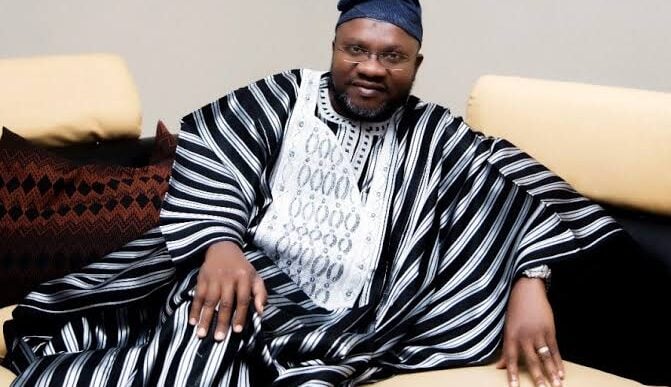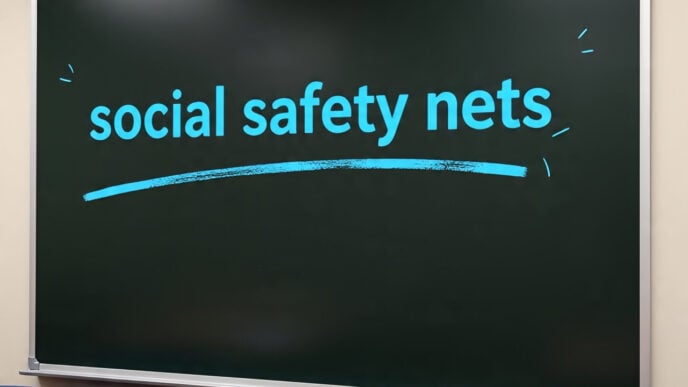BY CHINEDU MOGHALU AND MUNTAQA UMAR-SADIQ
In April 1955, the Berlin Philharmonic faced a moment of uncertainty. Its great conductor, Wilhelm Furtwängler, had died, leaving behind one of the world’s finest orchestras but no one to hold it together. A hall of virtuosos risked splintering into noise. Then Herbert von Karajan stepped to the podium. With a single lift of his baton, the fragments became a symphony. Over the next three decades, he shaped the Philharmonic’s identity so profoundly that critics said he did not merely conduct, he disciplined chaos into harmony.
A philharmonic, from the Greek for “love of harmony,” is never just an assembly of players. It is a fragile balance of strings, brass, woodwinds and percussion — each capable of brilliance, yet each able to overwhelm the others. The conductor does not play a note but interprets the score, sets the tempo, and ensures that every part breathes together. Without that hand, there is cacophony. With it, there is music.
Nigeria’s health system has long resembled an orchestra without such a conductor. Ministries, thirty-six states, development partners, local councils and overstretched health workers all played their parts, but too often in fragmented isolation. The result was duplication, waste and silence in moments when lives depended on sound. It was into this hall that Muhammad Ali Pate returned in August 2023, leaving a senior position at the World Bank, a Harvard professorship, and a global role at Gavi. He came home not as a soloist seeking applause but as a conductor determined to draw coherence from a fractured score.
The instrument he chose was the Nigeria Health Sector Renewal Investment Initiative (NHSRII). Within four months, at the behest of President Bola Ahmed Tinubu, Pate brought every governor and seventeen development partners into one Compact at the Presidential Villa. At the core lay a Sector-Wide approach (SWAp) hinged on one plan, one budget, one report and one conversation, which for the first time placed Nigeria’s health system under a unified framework for alignment, resource convergence and accountability – on a path to amplifying impact on population health outcomes. A SWAp Programme Management Unit was established within the Presidency itself, giving the reform endeavour a podium at the highest political level. Anchored on the President’s Renewed Hope Agenda, health reform gained political cover and urgency. Billions of dollars in commitments were aligned to a single score.
Advertisement
Primary health centres are the strings of Nigeria’s orchestra, carrying the melody and shaping the rhythm of daily health. Here the most visible transformation has begun. Nearly ₦90 billion has been disbursed directly to more than eight thousand primary healthcare facilities, money once lost in bureaucracy now reaching the nurses and midwives in charge in the facilities. Over a thousand, three hundred centres have already been fully revitalised, with more than five thousand more underway, towards a target of seventeen thousand functional PHCs across the country. Power, water, cold chain equipment and diagnostics are starting to replace the emptiness of painted walls. In just the first quarter of 2025, more than thirty-seven million Nigerians sought care at this level – from 10 million in the same quarter in 2024, signalling improved confidence in the health system.
To sustain this rhythm, the new Community-Based Procurement Platform was launched under the ₦17 billion Social Action Fund. It geo-tags procurement to the ward level, empowers local organisations, and assigns compliance officers across all seven hundred and seventy-four local government areas. Women-led and disability-focused community organisations are no longer left out — they are now embedded in procurement governance.
Equity became the principle behind the score. Clinics are being upgraded across all the states – with no community left behind. Insurance coverage, once a distant dream of the poor, expanded from sixteen million people in 2023 to twenty million by early 2025. Premium subsidies now protect vulnerable households from the financial shocks of illness. The Catastrophic Health Insurance Fund, approved in the 2025 budget, is targeting high-cost conditions such as cancer and kidney disease — conditions that often drive families into poverty.
Advertisement
Three new oncology centres have opened in Katsina, Enugu and Benin, with three more in the pipeline. State performance scorecards and strict enforcement of a SWAp incentive framework are compelling governors to align to the NHSRII priorities (through revamped State annual operating plans) and match commitment with cash or in kind contributions, such as in human resource, facility revisitation, digital health infrastructure and the supply of essential commodities. Nigeria now leads the continent in governance, resource convergence and accountability under the SWAp compact. While out-of-pocket spending still exceeds seventy per cent, the foundations for fairer more equitable financing are finally being laid.
Maternal and child health is no longer an afterthought. Through the NHIA-empanelled MAMII, one hundred and seventy-two local government areas — home to half of all maternal deaths — are now prioritised. Since 2023, more than thirteen million antenatal visits and four million skilled deliveries have been recorded, alongside thousands of free caesarean sections. Fourteen million adolescent girls have received HPV vaccines, and fifty thousand previously unreached children were covered in one hundred focus local government areas. Prevention is finding its place beside cure.
But melody alone does not fill a hall. The brass must add force. Pate’s answer has been the Presidential Initiative for Unlocking the Healthcare Value Chain. He has long argued that no nation is secure if it imports the medicines on which its survival depends. By 2025, the initiative had attracted more than $5 billion in bankable projects, including $1 billion each from Afrexim Bank and the European Investment Bank, and more than $200 million from a single manufacturer. Six international firms have announced plans to begin production in Nigeria, supported by an Executive Order waiving import duties on machinery and raw materials. Alongside this industrial drive, federal teaching hospitals have begun long overdue rehabilitation – part of a strategy to restore them as centres of excellence and reduce dependence on medical tourism. It was the brass section entering with force and confidence.
Even so, percussion intruded. Cholera flared with the rains and diphtheria struck again, outbreaks beating their drums across communities. The Ministry responded by creating the Nigeria Preparedness and Readiness Alert System, a predictive platform, and by training more than three hundred infection prevention officers across hospitals. These were important beats, but percussion cannot dominate. Without safe water, sanitation and resilient vaccination, outbreaks will continue to cut into the melody.
Advertisement
No orchestra can survive without breath. In music it comes from the woodwinds. In health it comes from the workforce. Nigeria’s doctors, nurses and midwives provide this balance, but their sound is thinning. Of one hundred and thirty thousand doctors ever registered, fewer than sixty thousand remained active in 2023, and every month more leave for the United Kingdom, Canada or the Gulf. To respond, a Health Workforce Migration Policy has been introduced — the first structured framework to manage this exodus by balancing mobility with national needs and by negotiating fairer terms with destination countries. Alongside it, the National Health Fellows Programme has placed young professionals in every local government area, offering presence and accountability at the primary level. Together they are early steps to keep the orchestra breathing rather than gasping for air.
Then, in a defining act, President Tinubu, early this month, on advice from the Health Ministry, issued a directive that no procurement, licence, or regulatory approval would proceed without the proof of health insurance. The NHIA certificate is now as essential as a tax ID. Health financing finally has a tempo, and enforcement is the new baton. The target is clear: forty-four million Nigerians insured by 2030, forming the largest risk pool on the continent. Fiscal conditions now permit it. The national deficit has dropped from 5.4 to 3 per cent of GDP. Revenues have risen to 11.5 per cent. Thirty-four states are reporting surpluses. It is finally possible to fund dignity.
New energy is coming from the diaspora. Several now enable structured remittances that fund health insurance for families back home. Health taxes on tobacco, alcohol and sugar-sweetened beverages are under review—not just for their deterrent effect, but to unlock new fiscal space and make Nigerians healthier.
Reforms to the Basic Health Care Provision Fund are underway. Discussions are ongoing to deduct counterpart funding at source, raise the CRF share above one per cent, and earmark part of FAAC savings for health, school feeding and social protection. These actions would stabilise the base for vaccine access, health security, health insurance, local manufacturing and primary care.
Advertisement
The true measure will not be found in compacts or memoranda. It will be in lives. Success is a midwife in Zamfara who can count on oxytocin and a working lamp at two in the morning. It is an officer in Rivers who can resolve a stockout in hours rather than days. It is a carpenter in Onitsha who can refill his hypertension drugs predictably every month without selling a goat. Failure is subtler — a clinic with new paint but empty fridges, a governor who signs a compact but withholds counterpart funds, an insurance card that buys nothing.
Herbert von Karajan once gave the Berlin Philharmonic a sound the world could recognise in a single phrase. That is the challenge before Muhammad Ali Pate. He has built architecture where there was none, compelled governors and partners into one compact, channelled billions directly to frontline clinics, expanded insurance, revitalised immunisation, embedded nutrition into health planning, commissioned oncology centres, rehabilitated teaching hospitals, shaped policies to stem the exodus of health workers and dared to enforce tempo. And he has done so under the Renewed Hope Agenda of President Tinubu, whose political cover has given reform legitimacy and urgency.
Advertisement
The orchestra is vast, the score ambitious, the stakes life and death. Whether Nigeria finally hears the music of renewal will depend on whether the conductor can hold the tempo long enough for harmony to emerge. Then, Nigeria may at last hear its long delayed symphony of health.
Moghalu is the senior special adviser on Strategic Communication, Stakeholder Engagement and Advocacy to the Coordinating Minister of Health and Social Welfare, while Umar Sadiq is the National Coordinator of the Sector-wide Coordinating Office-Programme Management Unit.
Advertisement
Advertisement
Views expressed by contributors are strictly personal and not of TheCable.











